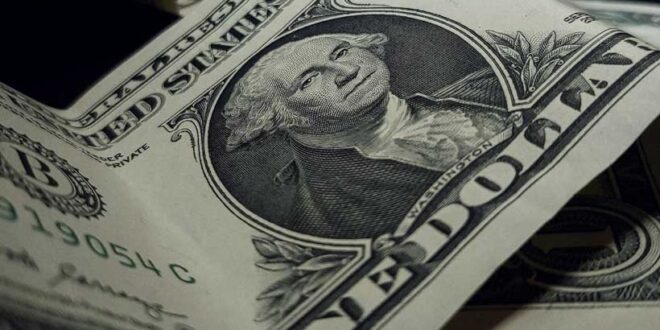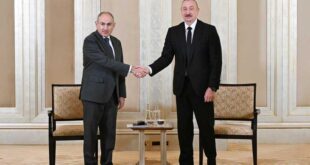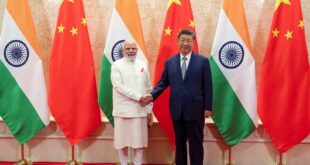In recent years, the term “de-dollarisation” or trade in non-dollar currencies instead of the US Dollar has begun to draw attention in discussions on international affairs. This has increased even more so after US President Donald Trump’s threats to countries pursuing ‘de-dollarisation’. Apart from warning countries against “de-dollarisation”, Trump has also repeated warned BRICS member states against going ahead with a common currency.
In February 2025, after taking over as US President, Trump commented:
“BRICS states were trying to destroy our dollar. They wanted to create a new currency. So when I came in, the first thing I said was any BRICS state that even mentions the destruction of the dollar will be charged a 150% tariff, and we don’t want your goods and the BRICS states just broke up,”
It is important to understand the nuances pertaining to de-dollarisation as well as the BRICS grouping
The approach of Russia and China vis-à-vis de-dollarisation
Russia and China have been pushing for an alternative economic architecture. After the imposition of sanctions against Russia — in the aftermath of the Russia-Ukraine war – Russia and several other countries have repeatedly spoken against the ‘weaponisation’ of the US dollar. While speaking at the BRICS Summit, held at Kazan (Russia) Russian President Vladimir Putin said:
“The dollar is being used as a weapon. We really see that this is so. I think that this is a big mistake by those who do this”.
Both countries, along with nations like Iran, have also pitched for an alternative BRICS currency. There is a strong geo-political dimension in the approach of both Moscow and Beijing towards “de-dollarisation” as well as a potential “BRICS” currency.
Here it would be important to point out that a Kremlin Spokesperson, Dmitry Peskov categorically stated that while the BRICS group was exploring the possibility of setting up “joint investment platforms” it was not looking to set up a common currency.
While there is no real consensus within BRICS regarding a common currency, both Moscow and Beijing are spearheading an initiative BRICS Pay a payment messaging system which will facilitate trade between BRICS countries in their local currencies.
The economic imperative for de-dollarisation
On the other, countries like India, UAE and Saudi Arabia and ASEAN countries — like Malaysia — and several other nations which share good ties with US have resorted to non-dollar trade, or are exploring the possibilities of doing so, to avert the sanctions imposed on Russia. Significantly, trade in commodities, especially oil, in Non-Dollar currencies has risen in recent years.
India’s stance vis-à-vis a BRICS currency
India has clarified that it does not stand for a BRICS currency or does not aim to weaken the US dollar in anyway. It has also expressed the view that there is no consensus within the BRICS grouping regarding a common-currency
India’s External Affairs Minister, S Jaishankar while speaking in Parliament did reiterate the importance of BRICS. Said Jaishankar:
“Brics is a platform that has grown in membership and agenda over the last two decades. It is our endeavour to enhance understanding of BRICS activities among the international community,”
BRICS expansion
It is important to bear in mind that irrespective of Trump’s threats, the BRICS grouping is likely to expand. While two ASEAN nations – Thailand and Malaysia – joined BRICS as ‘member states’ in January 2025, another ASEAN nation Indonesia joined BRICS as a full member. In doing so, it became the first ASEAN nation to become a member of the organisation and the 10th member of BRICS. Eight countries — Algeria, Belarus, Bolivia, Cuba, Kazakhstan, Nigeria, Turkey, Uganda, and Uzbekistan – joined BRICS as member states.
While Vietnam has been cautious regarding entry into BRICS, another ASEAN nation with close ties to the US – Philippines – is also debating the idea of entering the China dominated group.
Countries which follow a balanced policy and do not want to get drawn in to the US-China wrangling would certainly look to BRICS as an option in an increasingly uncertain geopolitical and economic situation arising out of Donald Trump’s unpredictable policies and the trade wars he has initiated against several countries.
Brazil which assumed the Presidency of BRICS in 2025 has invited Mexico, Uruguay and Colombia to participate in the next BRICS Summit in July 2025. Brazilian President, Luiz Inacio Lula da Silva, underscored the importance of BRICS and also said that it should strengthen “free trade and multilateralism”. While addressing the BRICS Sherpa meeting, the Brazilian President said
“Resorting to unilateralism undermines the international order…In the face of polarization and the threat of fragmentation, the consistent defense of multilateralism is the only path we must follow”
The BRICS grouping is also likely to focus on common challenges impacting the Global South. Apart from economic challenges in the imminent future, finding common ground on global health and environmental challenges would stand the organisation in good stead.
Conclusion
In conclusion, while the BRICS currency may seem a stretch, de-dollarisation is here to stay — irrespective of Trump’s threats. The Trump administration needs to understand why de-dollarisation has gained momentum in recent years and address some of the root causes. Given the US President’s approach towards issues like sanctions and tariffs, which is rather simplistic, this is highly unlikely. The BRICS as an organisation may have its limitations and a lack of consensus on several issues, but it is important platform in the context of the Global South.
 Geostrategic Media Political Commentary, Analysis, Security, Defense
Geostrategic Media Political Commentary, Analysis, Security, Defense





